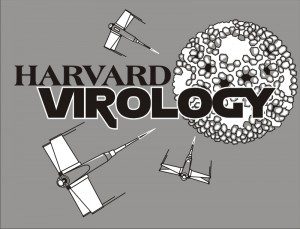

The problems begin with the first paragraph:
But when Dutch researchers recently created an even more deadly strain of the virus in a laboratory for research purposes, they stirred grave concerns about what would happen if it escaped into the outside world.
Readers of virology blog will know by now that the Dutch researchers did not make an ‘even more deadly strain of the virus’ – they made one that could be transmitted by aerosol, but which had lost its lethality.
The title of the article, ‘The Deadliest Virus’, presumably refers to the H5N1 virus that transmits by aerosol among ferrets. This title is simply wrong, because the virus is not deadly to ferrets.
The first paragraph also contains an equally egregious statement by epidemiologist Marc Lipsitch:
If you make a strain that’s highly transmissible between humans, as the Dutch team did, it could be disastrous if it ever escaped the lab.
Dr. Lipsitch seems to be saying that the Dutch group created an H5N1 virus that transmits among humans. As far as I know, ferrets are not humans.
The article is accompanied by a photograph of two scientists working in BSL4 suits. The legend reads:
The modified H5N1 virus could infect a billion people if it escaped a biocontainment lab like the Canadian facility shown above.
And later Lipsitch is quoted as saying:
It could infect millions of people in the United States, and very likely more than a billion people globally, like most successful flu strains do. This might be one of the worst viruses, perhaps the worst virus, in existence right now because it has both transmissibility and high virulence.
For Lipsitch to say that the virus is both transmissible and of high virulence in humans is a misrepresentation of the Dutch group’s findings. He seems to be making up numbers and scenarios.
Perhaps Dr. Lipsitch does not know that ferret studies are not predictive of how viruses will behave in humans. With so many virologists at Harvard, the writer could have checked Dr. Lipsitch’s statements. But he did not, and the result looks as foolish as the New York Times.

Classical case of commercialization of institutes by sensationalizing the research findings. Thanks for exposing and informing the readers. 🙂
Dr. Marc Lipsitch is an epidemiologist at the Harvard School
of Public Health, and is not associated with the Virology Program at Harvard
University (please see the Faculty link), as is implied in this post.
I did not imply that Dr. Lipsitch is part of the virology program. There is no need to defend the virology program as I was not being critical of it or its members; indeed, I praise the program in the post.
I do think that Harvard is Harvard, as Columbia is Columbia, and so on. It is not appropriate to distance oneself from someone in the School of Public Health just because you are in the medical school of the same institution. Anyone at Harvard should be outraged that such a misleading article has been published under the Harvard banner. The Harvard Magazine goes out to all of Harvard and its graduates, and has a great deal of power. One only need look at the comments at the original article to understand this.
Harvard vs. Columbia … your bet ?
—————————————
It’s usually not 100% clear who is right since formulations
are interpretable. Lower CFR but higher Attack Rate
and more deaths in total would be “more deadly” ?
(and, as you say ferrets are not humans…)
——————————-
There is evidence that it’s higher transmissable in humans,
while there is no evidence to the contrary.
——————————-
Lipsitch did not say it’s “both transmissable and highly virulent”.
He said “could” and “might” … leaving room for us to interpret
how this translates to his subjective probability estimates.
I meant, the experiments in question gave new evidence for
possible/likely higher trransmissiability in humans,
while they gave no new evidence to the contrary.
Pingback: The value of influenza aerosol transmission experiments | Health News Latest
Pingback: GOF – A raging controversy | Biology @ WGS
Pingback: 1977 H1N1 influenza virus is not relevant to the gain of function debate
“which had lost its lethality” is perhaps false, because of the six ferrets injected in the trachea all died in this experiment.